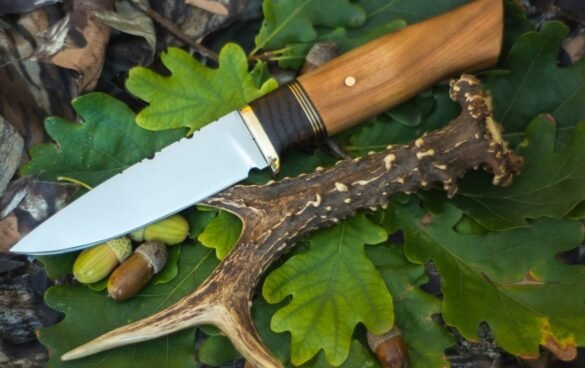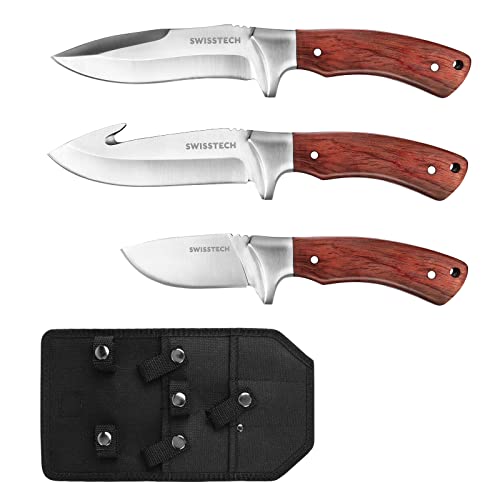Table of Contents
Before you settle on that new hunting knife, there are a few things you should consider. What animals will you hunt? How will you dress and butcher the animal? Do you plan to have a mount made? How do you want to carry the knife and is size or weight a factor? All these things may not seem important at first glance, but get into the elk woods with a knife poorly suited to skinning, caping or deboning and they suddenly become apparent.
Small game and upland birds are often easily handled with the average pocket knife. There are, however, knives specifically designed for small game. Big game like deer, elk, bear, moose and caribou are just that … BIG game. As the size and weight of the animal increase, the toughness of the hide increases.
Body size and weight are decidedly an issue if you need to quarter or debone the animal to get it home or to a meat processor. That pocket knife you use on rabbits or quail might get the job done on a bear, but it isn’t going to be easy or pleasant. Neither is field dressing a cottontail with a large, fixed-blade sheath knife.
Let’s look at the basic tasks we ask our knives to do
We’ll stick with big game. After the kill, your first consideration will likely be field dressing or gutting. Any experienced hunter knows that, right? But is there a particular type knife that is better at gutting than some other? Can’t you gut a deer or an elk with the same knife you’ll use to skin it? Sure you can, but …
Consider that a dedicated gut hook, or a knife with a built-in gut hook, will do a neater, cleaner job of field dressing than a skinning knife will, just as a skinning knife will skin that elk easier and more efficiently than a deboning knife ever could. And speaking of deboning … try it with a dedicated gut hook sometime. And what if that elk you just shot is your “Trophy of a Lifetime”? You want a mount, don’t you? At least a full head or a shoulder mount, huh? That means somebody will have to cape that elk properly so your taxidermist will have something to work with besides a ragged hide full of nicks and holes. A caping knife is in order.
The point here is that there are different type knives for different tasks. The right tool for the job, as the saying goes.
Now let’s compare the types mentioned so far:
Dedicated gut hooks
This knife (for our purposes we’ll call it a knife) really has only one intended purpose … to cut open the belly, or paunch, WITHOUT cutting into the entrails and making a huge, stinking, contaminating mess. The dull tip does not nick the gut as the inverted “U”-shaped cutting edge zips open the belly slick as a whistle! Kind of like one of those fancy letter openers. It’s not much good for anything else, although I suppose it could pass as a pencil sharpener in a pinch.
Knives with built-in gut hooks
This is a regular knife, just about any style blade, but with the gut hook built right in. Double duty, two-in-one, if you will. (We’ll talk about the different blade styles further down the page.)
Skinning knives
Skinning knives typically have a rounded blade and are not so pointed at the tip. The rounded cutting edge facilitates cutting the membrane that holds the skin to the animal. You use it in a sort or “swiping” or “rocking” motion, as opposed to “slicing”. The blunter tip helps you avoid punctures in the hide and meat as you progress. As with any knife, there are variations and adaptations but a skinner almost always has this rounded, blunt-tipped appearance.
Deboning knives
Often thought of as a “butcher knife” or simply a “boning knife”. This type knife is ideal for cutting meat from bone. The relatively narrow blade facilitates close, clean cuts so you don’t waste any meat. At the risk of offending, or angering the purists, this is, in all honesty, the one you can probably do without.
There are plenty of general, all-around hunting knives that can adequately debone a large animal. Then again, a deboning knife could serve as a good general all-around hunting knife.
Caping knives
Caping involves fine, detailed skinning work around your trophy’s antlers, eyes, ears, nose and mouth. A good caping knife usually has a slim, thin … but not too flexible … blade and a fairly small, somewhat ergonomic handle. Control and delicacy are paramount with a caping knife. Some caping knives have pointed blades, some rounded. Some carry the rounded end to the extreme. This is more a matter of preference than anything else. While the rounded versions help ensure you don’t accidentally poke a hole where you don’t want one, the pointed versions can reach into tighter places to make more delicate cuts. Just remember … control and delicacy. Any unwanted hole will have to be patched by your taxidermist (most likely at added cost to you) and any “missing” hide is not easily or inexpensively replaced.
It’s possible to cape out a nice trophy with that general, all-around hunting knife, but keep in mind the old saying about the right tool for the job. You don’t want to use a sledge hammer to drive finish nails.
Blade styles
As far as hunting knives go, there are three basic blade styles drop point , clip point and skinning .
The drop point is an excellent blade design for big game. The blade is generally heavier and thicker, making for a solid, sturdy knife capable of splitting the sternum and even the ribs of all but the largest, toughest big game animal. The gradual curve from handle to point allows full use of the entire length, instead of only the first inch or so from the point. The drop point is an outstanding choice for hunting.
Clip point blades are somewhat thinner than drop points and the point is accentuated. It’s also a bit flatter from cutting edge to back and makes an excellent all-purpose knife, hunting aside. Most hunters would agree that, if you have only one hunting knife, the clip point is not quite as good as the drop point. It’ll work, just not as efficiently in a variety of situations.
Many skinning knives are very similar in design to the drop point. However, the “typical”, “modern” skinners don’t have the gradual curve associated with the drop point. The skinner’s curve is usually more drastic, starting more in the middle than at the handle, and the curve tends to have a greater radius than that of the drop point. A good skinner also makes a good camp knife. It slices better than the other two types. Some very old skinner designs, not much in production as hunting knives nowadays, have an almost crescent shape and often much longer blades. They still see use in commercial operations but are not very “handy” to tote around camp or the hunting woods.
Fixed or Folding?
Fixed blade knives generally do not have any moving parts. That said, there are some with interchangeable blades, and even a few that have two blades, one projecting from each end of the handle … one blade at a time, by “sliding” the handle back and forth. For our purposes, these are still fixed blade knives.
Fixed blades require a sheath to protect the cutting edge, and the hunter. They are obviously longer than a folder of the same blade size, so not as compact for storage or carry. All but the smallest/shortest will, by necessity, be carried on the belt or in a pack. Fixed blades are very sturdy, easier to keep clean and tend to last a very long time.
Folding knives do just what the name says. The blades fold away into the handle when not in use, although not by themselves. Safety first, folks. Folders are more compact. All but the largest will fit in your pocket but most hunting folders come with a belt sheath. Any folding knife used for big game should have a mechanism that locks the blade open. Folders are not as strong or long lasting as fixed blades.
Pivots eventually wear out and, occasionally, a locking mechanism fails. They are also a bit harder to keep clean. Debris, blood, grit, dirt, animal hair, you name it, always finds its way into the blade storage slots, the pivots, and even under the locking bar. Not a big deal and not all that hard to clean, just something to consider.
Summary
There is a knife for every task you’ll encounter in hunting. Each task begs the proper knife. Does this mean you’ll need to carry three, four, five knives every time you set out from camp? Of course not. With one well-designed, well-made knife, maybe two, you can accomplish any of those tasks.






